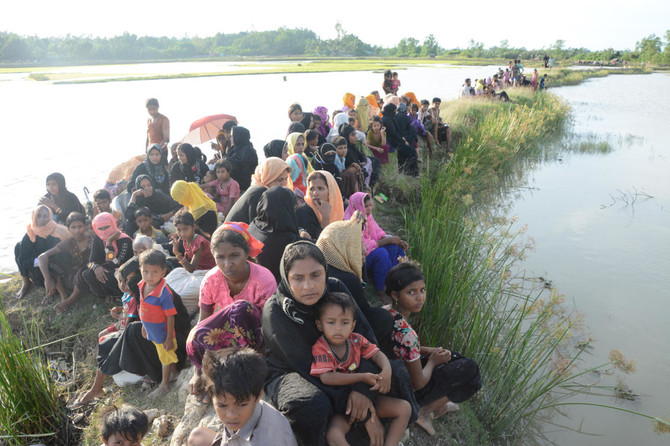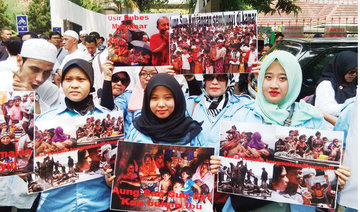DHAKA: “I can’t believe I’m still alive,” said Abdur Rahman, a 46-year-old Rohingya who fled Chikon Jhuria village in Rakhine state, Myanmar.
“The army suddenly attacked our village at around 9 a.m. The whole village was burned down. Me, my wife and our 4-year-old boy took shelter in the adjacent jungle. My mother and two uncles were shot dead by the army.”
It took four days for Abdur Rahman, his wife and son to reach Ukhia refugee camp in Bangladesh.
Rahela Begum, 29, said it took her three days “without any food or even water” to reach the camp. “I don’t know what awaits me here. I only know that I’m safe,” she said.
This is a glimpse of the suffering of Rohingya Muslim refugees. Since Aug. 25, some 60,000 have escaped from Rakhine to Bangladesh, according to the UN.
Local reports say there are at least 10,000 more people waiting at the Bangladesh-Myanmar border.
“I’ve never witnessed such a big number of Rohingya refugees within such a short span of time,” said Ataur Rahman, a member of the Bangladesh Borders Guard.
The International Organization for Migration (IOM) is struggling to provide basic humanitarian support for the rapidly rising number of refugees, an IOM staff member said on condition of anonymity.
Local Bangladeshis are trying to help, but “the situation is so grave that Bangladesh can’t handle it anymore by itself,” said a government official on condition of anonymity.
“The international community and the Organization of Islamic Cooperation (OIC) need to come up with emergency aid.”
Prime Minister Sheikh Hasina has urged the US to pressure Myanmar’s government to stop atrocities against the Rohingya.
Rohingya refugee numbers in Bangladesh skyrocket
Rohingya refugee numbers in Bangladesh skyrocket















